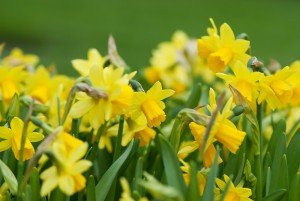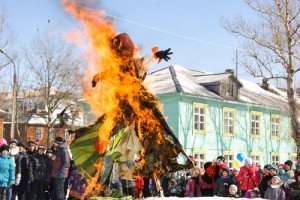
Story by Teri Weiss
Special to The Stuttgart Citizen
”March comes in like a lion, and goes out like a lamb”
It’s a proverb passed down many generations ago. Scholars trace it back to centuries-old agricultural customs and sturdy farmers who always had to rely on climate observations to forecast or “guesstimate” their own weather. Early spring was often marked by freezing cold and belated winter storms, i.e., started with a lion’s roar. But by the second half of March, the weather usually turns warmer, spring-like and docile, like a gentle lamb. The German version, the old “Bauernregel“ (peasant’s saying) states the proverb in similar words: “Der März soll kommen wie ein Wolf und gehen wie ein Lamm.“
Perhaps it’s best to just take the proverbial saying at face value. In any case, March, the third month of our western or Gregorian calendar, is named for Mars, the Roman god of war – and earlier also vegetation and fertility. Often called the “loud or stormy month,” it is also the time of the vernal equinox, the official start of spring. Old German almanacs used to refer to March as “Lenzmond,” “Lenzing” or “Frühlingsmond,” spring moon or month, when “slowly nature awakens, flowers begin to bloom, shrubs, bushes and trees sprout buds and migrating birds return from the south.”

This year on the fourth Sunday of Lent, (three weeks before Easter), various towns of Northern Baden-Württemberg – for example Heidelberg, Mannheim, Weinheim , Speyer, Hockenheim, etc… located on the Neckar River celebrate an over 500-year old custom, the traditional “greeting spring and bidding farewell to winter” festivity, called “Sommertagszug,” or summer day procession. Children parade through the streets with sticks adorned with colorful ribbons topped with pretzels and boiled eggs until they reach the market square, where dancers costumed as “Winter” and “Spring” fight it out on a stage. Spring wins, of course, and finally a straw or paper effigy of winter is burned. The pretzels and eggs are given to onlookers. Spring is now considered to have officially arrived.
Heidelberg Sommertagszug March 11
The annual Heidelberg Early Summer Procession (Sommertagszug) begins at 3 p.m. in the St. Anna Gasse and then passes through the Old City as far as Marktplatz. The colorful procession includes drummers, musicians and costumed marchers, while special pretzels are a traditional snack served to bystanders. Children march through the Old City sporting special rods that are adorned with a pretzel, an empty eggshell and brightly colored ribbons. For more information, visit http://www.heidelberg-marketing.de/en/events/highlights/traditional-events.html.
St. Patrick’s Day
The best known, and certainly the most popular holiday in March is St. Patrick’s Day on March 17. All over the world, including in Germany, it is celebrated with marches and parades. And in Stuttgart too, there are numerous “wearers of the green” of all nationalities sure to raise a cup of cheer or two.
View St. Patrick’s Day trips and on-post events
Let’s see whether the old proverb about March is true, or whether lion and lamb reverse their timing. Bundle up, just in case, until April.
